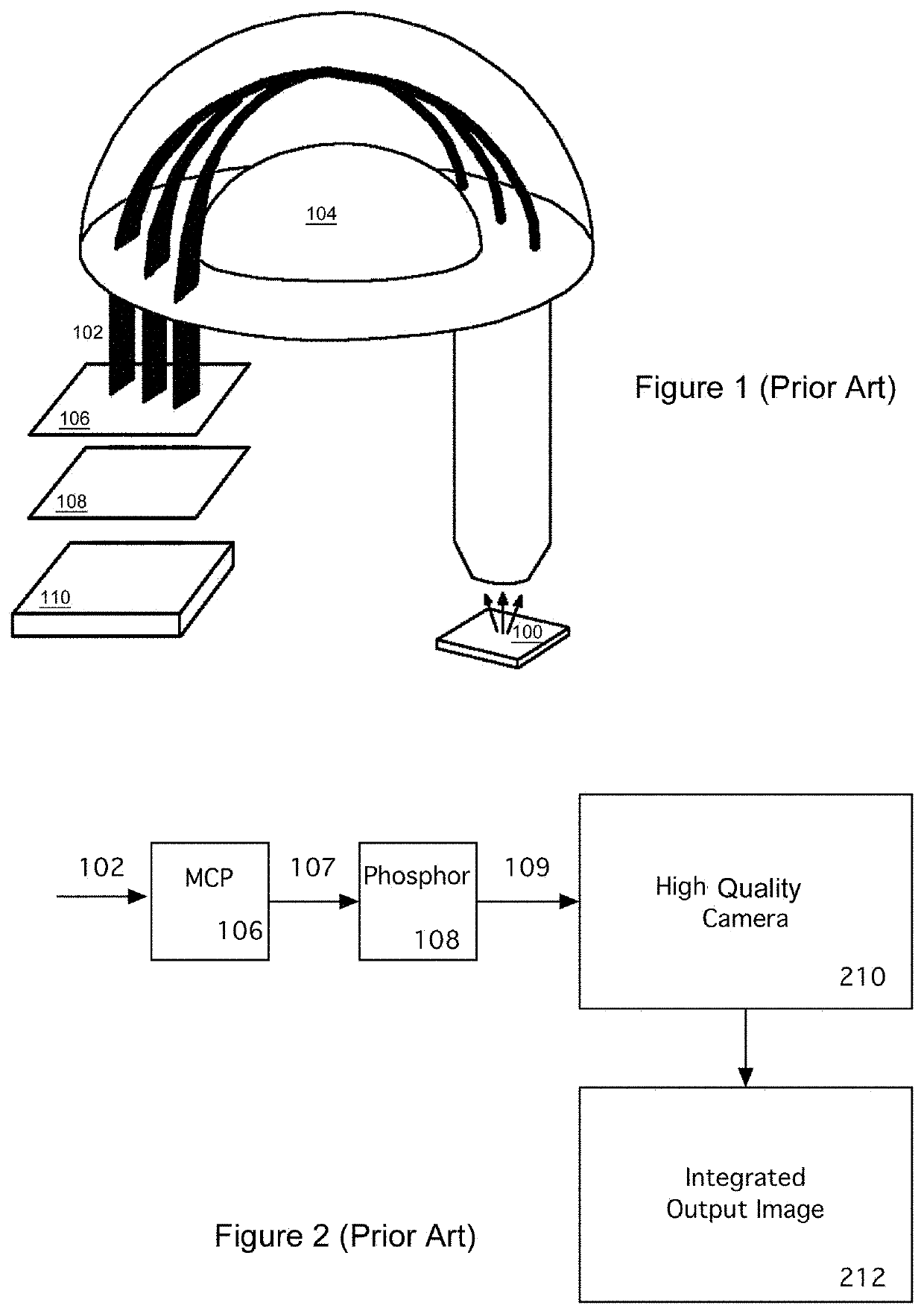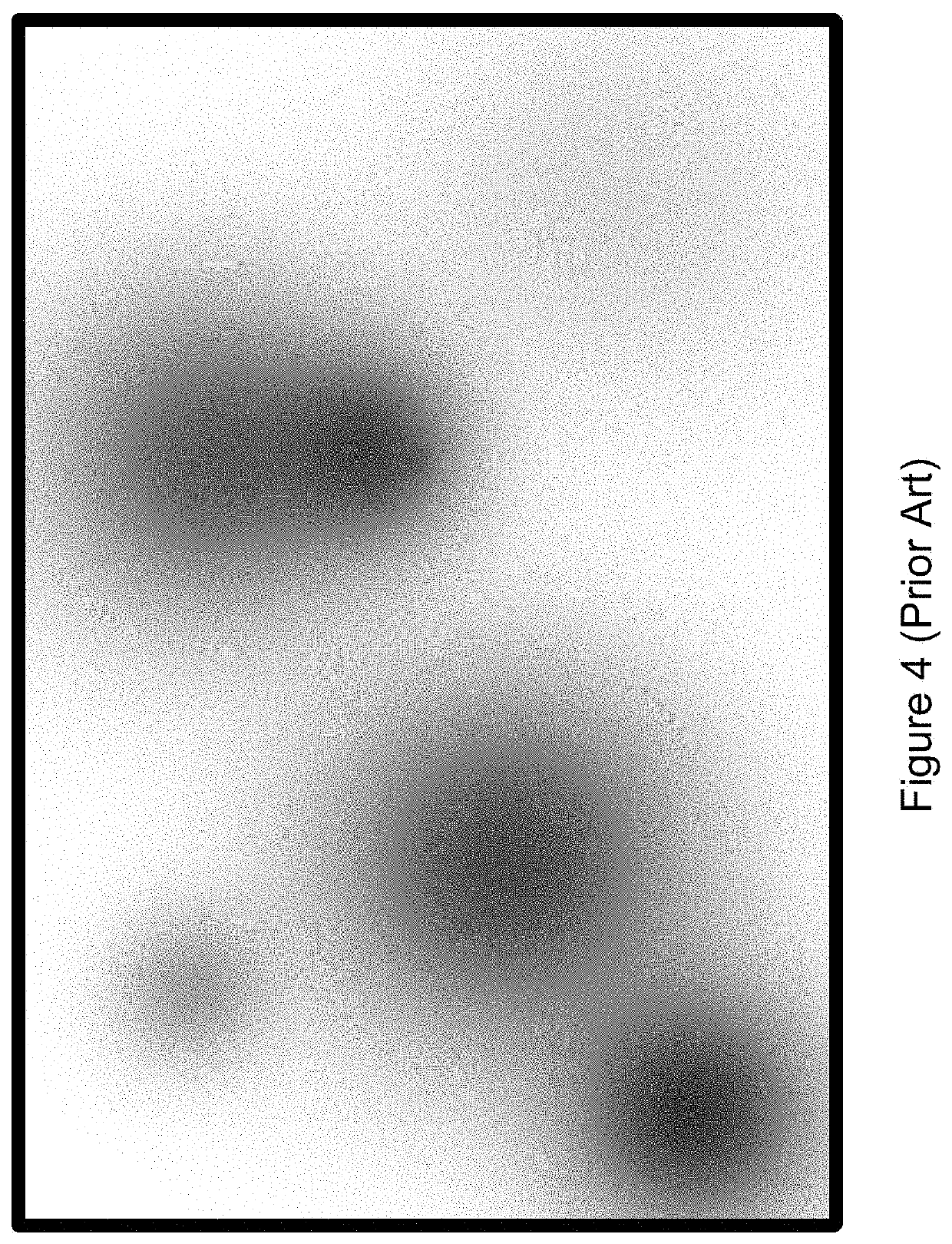High Speed Two-Dimensional Event Detection and Imaging Using an Analog Interface and a Massively Parallel Processor
a two-dimensional event and analog interface technology, applied in the field of high-speed and high-resolution two-dimensional event detection and imaging, can solve the problems of high fps, moderate quality, lower dynamic range and noise floor compared to scientific cameras, and achieve the effects of improving the processing part of the stack, improving linearity, and improving the processing quality
- Summary
- Abstract
- Description
- Claims
- Application Information
AI Technical Summary
Benefits of technology
Problems solved by technology
Method used
Image
Examples
Embodiment Construction
[0025]FIG. 3 is a schematic block diagram illustrating one embodiment 300 of a system for high-speed high-resolution two-dimensional event detection in a system with an analog interface. Event-style photon data (or electron data or the like) from sample 100 is generated by an analog layer such as a MCP 106 and phosphor plate 108 and sent to high-speed detector 310. In preferred embodiments, a Flea3 or a Grasshopper3 from ptgrey.com can be used. Both are CMOS cameras. The Grasshopper3 has 2.3 MP resolution at 163 FPS. The Flea3 has 1.3 MP resolution at 150 fps. In a preferred embodiment, data travels via USB3 (a cable interface fast enough to provide live / real-time data to general processor 316). Image frames 312 are stored in memory, and then sent to the massively parallel processor 320 (e.g. GPU memory) for processing. Image frames 312 are sent serially.
[0026]Note that it is possible for a CCD 310 to directly detect electron bursts from an MCP 106, such that phosphor layer 108 is o...
PUM
 Login to View More
Login to View More Abstract
Description
Claims
Application Information
 Login to View More
Login to View More - R&D
- Intellectual Property
- Life Sciences
- Materials
- Tech Scout
- Unparalleled Data Quality
- Higher Quality Content
- 60% Fewer Hallucinations
Browse by: Latest US Patents, China's latest patents, Technical Efficacy Thesaurus, Application Domain, Technology Topic, Popular Technical Reports.
© 2025 PatSnap. All rights reserved.Legal|Privacy policy|Modern Slavery Act Transparency Statement|Sitemap|About US| Contact US: help@patsnap.com



